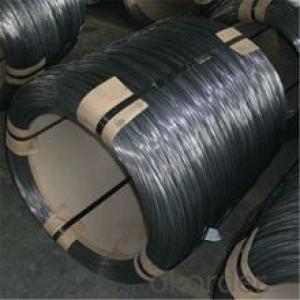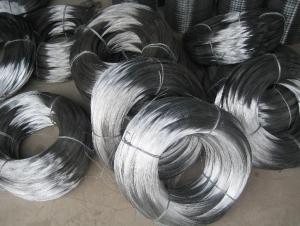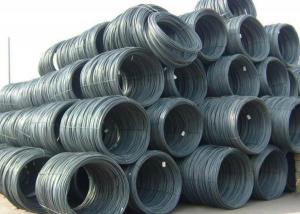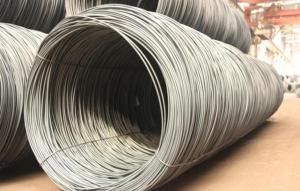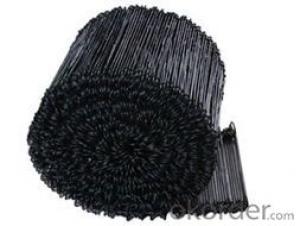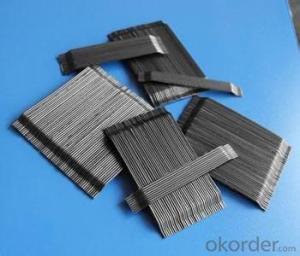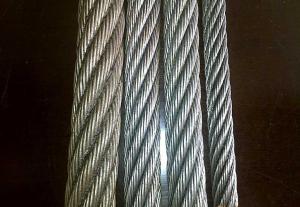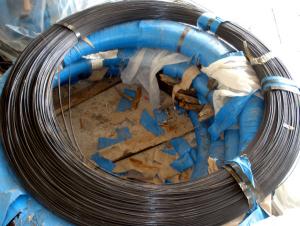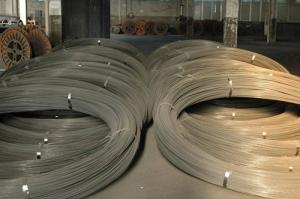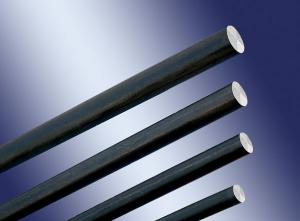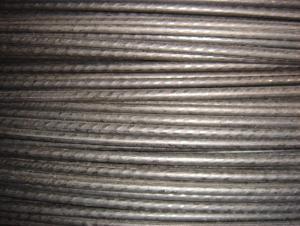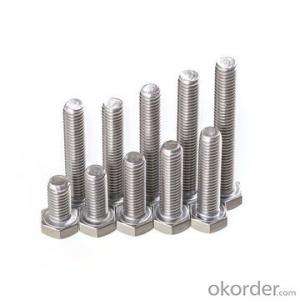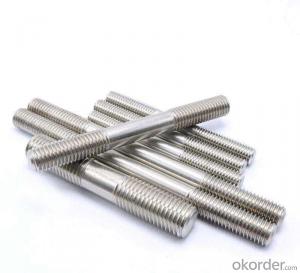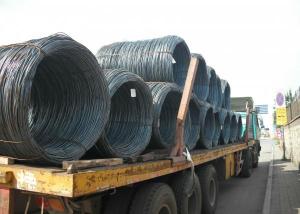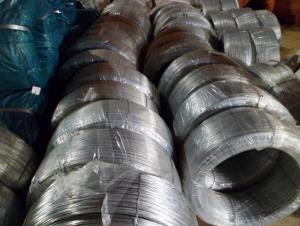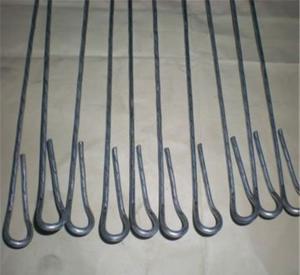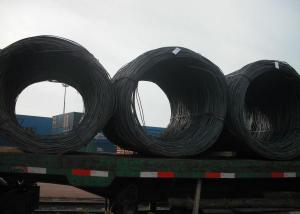steel wire for contruction
- Loading Port:
- China Main Port
- Payment Terms:
- TT OR LC
- Min Order Qty:
- -
- Supply Capability:
- 3000 m.t./month
OKorder Service Pledge
OKorder Financial Service
You Might Also Like
Quick Details
Steel Grade:45#,60#,65#,70#,72A,72B
Standard:AISI, ASTM, BS, DIN, GB, JIS
Wire Gauge:0.4mm-4mm
Place of Origin:Shandong, China (Mainland)
Type:Drawn Wire
Application:Manufacturing
Alloy Or Not:Non-alloy
Special Use:Cold Heading Steel
Model Number:0.4-4.0mm steel wire
steel wire:binding wire
Packaging & Delivery
| Packaging Details: | Coils Packing,Spools Packing or according to the customers'requirements. |
|---|---|
| Delivery Detail: | According to the customers' requirements. |
Specifications
Steel Wire
Type:Drawn Wire
Gauge:0.4-4.0mm
Steel Grade:45#,50#,55#,60#,65#,70#,72A,72B,80#
Standard:AISI,ASTM,BS,DIN,GB,JIS
Carbon Spring Steel Wire
The steel wire we produce are high quality and widely used for making spring,rope,hose, spring mattress,etc.
High carbon spring steel wire specifications:
1.Material:45#,50#,55#,60#,65#,70#,72A,72B,80#
2.Diameter:0.40mm-4.00mm
3.Standard:AISI,ASTM,BS,DIN,GB,JIS
4.Packing: Coils packing,Spools packing or according to the customers' requirements.
5.Weight:According to the customers' requirements.
6. 20"container:loading 20-25 Ton.
7.Tensile strength of steel wire performance table
Tensile strength of steel wire Steel Wire | |||||
Wire Diameter(mm) | Tensile Strength(Mpa) | Wire Diameter(mm) | Tensile Strength(Mpa) | ||
Grade B | Grade C | Grade B | Grade C | ||
0.40 | 1910-2300 | 2250-2650 | 1.40 | 1620-1910 | 1860-2210 |
0.45 | 1860-2260 | 2200-2600 | 1.60 | 1570-1860 | 1810-2160 |
0.50 | 1860-2260 | 2200-2600 | 1.80 | 1520-1810 | 1760-2110 |
0.55 | 1810-2210 | 2200-2550 | 2.00 | 1470-1760 | 1710-2010 |
0.60 | 1760-2160 | 2110-2500 | 2.20 | 1420-1710 | 1660-1960 |
0.65 | 1760-2160 | 2110-2500 | 2.80 | 1370-1670 | 1620-1910 |
0.70 | 1710-2110 | 2060-2450 | 3.00 | 1370-1670 | 1570-1860 |
0.80 | 1710-2060 | 2010-2400 | 3.20 | 1320-1620 | 1570-1810 |
0.90 | 1710-2060 | 2010-2350 | 4.00 | 1320-1620 | 1520-1760 |
1.00 | 1660-2010 | 1960-2300 |
|
|
|
1.20 | 1620-1960 | 1910-2250 |
|
|
|
- Q:I am replacing an old outlet with a GFCI and I have encountered a red wire...what is the red wire for?
- There might be a three way switch on the circuit,or a red wire can indicate a second hot wire. It gets complicated very fast, however almost all homes have these red wires in them, and they serve an imporatant service. Could be a red wire is used when you come out of a switch with hot and go into another switch as neutral.
- Q:The drawing shows two long, straight wires that are suspended from the ceiling. The mass per unit of length of each wire is 0.050kg/m. Each of the four strings suspending the wires has a length of 1.2m. When the wires carry identical currents in opposite directions, the angel between the strings holding the two wires is 15 degrees. What is the current in each wire?? Im not sure what equations to use for this problem.
- You need two basic equation: 1° Force acting on conductor in magnetic field: F = B I λ ..........(1) where B is magnetic field (also called magnetic induction) I is current λ is length of wire 2° Magnetic field near straight wire carrying current I B = μo I / (2πd) ..........(2) where d is distance from the wire μo is the magnetic permeability constant of vacuum (approx. same for air) μo= 4π*10^-7 Tm/A When there are two parallel wires on distance d carrying currents I1 and I2, each of them produce magnetic field causing forces acting on wires. Magnetic field from second wire creates force on first wire: F1 = B2 * I1 * λ Magnetic field from first wire creates force on second wire: F2 = B1 * I2 * λ These forces are equal in magnitude: F = μo I1 I2 λ / (2πd) ..........(3) When currents flow in same direction forces are attractive, and for opposite direction forces are repulsive. When I1=I2, F = μo I? λ / (2πd) ..........(4) Each wire, suspended on strings, decline from vertical position for angle θ=15°/2 = 7.5°, so that the angle between the strings holding the two wires is 2θ=15°. We find F from condition of static equilibrium of torques (relative to point where strings are attached to ceiling): F L cos θ = G L sin θ ..........(5) where G is weight of wire; G = m'gλ where m' is the mass per unit of length of each wire. L is length of strings from (5) we get relation F = G tan θ ..........(6) or F = m' g λ tan θ ..........(7) and from (4) and (7) : μo I? λ / (2πd) = m' g λ tan θ ..........(8) λ on both sides cancels, and we find current I as I = √(2 π d m' g tan θ / μo) ..........(9) You didn't say if there was some initial distance between wires, so we'll assume they are suspended in same points. In that case d = 2L sinθ ..........(10) and finally I = 2 √(π L m' g sinθ tan θ / μo) ..........(11) I = √[1.2 * 0.05 * 9.81 * sin 7.5° * tan 7.5° / 10^-7 ] I = 318.034 A
- Q:Has anyone tried to use or experiment to use CAT5E wire on a speaker going to Home theater receiver? If none, can you suggest a good speaker wire to use on a speaker.Paradigm Monitor Series and Onkyo TX-SR606 (Speaker and Receiver)
- Speaker wire is a big subject that prompts some very heated debates amongst the serious enthusiast crowd. Using CAT5 as speaker cable is usually motivated by either one of two thoughts: Saving money, or improving performance. I can see the point in saving money compared to say Hi-Fi speaker cables at $5/ft, but there are perfectly good OFC copper cables of decent gauge such as 79 strand that actually work out just as cheap. The other issue with cost saving is that not all CAT5e is created equal. A lot of the budget stuff from China is copper clad aluminium rather than pure copper. You'd never choose to run your speakers with aluminium cable, so why take the risk if using CAT5e? Performance is something different. That's very subjective. The reasoning why CAT5e is based on the high frequency performance of the cable. But in hi-fi world we need current delivery more than high frequency extension. My own view is that CAT5e sounds different enough to - buy not necessarily better than - basic OFC 79 strand for most listeners to hear the change fairly easily. Treble and to a lesser degree the bass gets accentuated at the expense of midrange. It's a bit like hitting the Loudness button. The sound has a bit more presence at the expense of naturalness. Personally I think the benefits are dubious and not worth the effort. Get a decent gauge OFC that's nice and flexible rather than some plaited network cable.
- Q:I am changing an outside light with a inside wall switch there is 2 cables going to the outside box. ( 3 wires -white w/red line wire and black wire and green ground wire ) other cable 3 wires is white wire and black wire and green ground wire.On the inside switch is 3 wires white wire a black wire a green ground wire.for some reason it is not working, can any one tell me how to wire and or test for power. thank you
- Assuming the inside wire is proper - separate the wires at the outside box (so they cannot touch anything - turn on the switch - touch one lead of a circuit tester to the black wire outside the other to the ground (should light) - try again to the white wire (again - should light) If neither works the switch or the wire is bad.
- Q:Im installing a motion sensor which comes with 3 wires,red black and white and want to connect it to a indoor light that only comes with 2 wires white and black.How do I go about installing them and powering them?
- Hook the white wire to the white on the fixture and the white coming in. The black coming in gets wired to the black wire on the detector. The red gets hooked the the black in the fixture.
- Q:Hello everyone! I have what is probably a very simple question.I'm not exactly a radio expert. So my question is this:Is there a difference between copper wire and antenna wire (copper as well)?
- Since high frequency electromagnetic waves travel at or near the surface of the wire, then the wire has no need to be solid copper, as there won't be any current flowing through the center anyway. Thus most antennas are hollow (to reduce weight). As the first responder said, sometimes antenna wire is formed from copper wire strands wrapped around a steel core. Steel is a relatively poor conductor, but since most or all of the current flows through the outside, this doesn't matter. The steel center provides strength, as steel is stronger than copper, and it is usually less expensive. But you can just use pure copper wire also; it shouldn't matter for most applications. If using a two conductor wire -- one ground and one for the signal in the same cable -- then keep in mind that a twisted pair is more resistant to outside noise:
- Q:What does the wire do for braces? What happens if you pull it out and everything else it ok?
- The wire is like a train track and the teeth are the cars. Get rid of the track and the cars go off course. Wire is what is putting everything in place.
- Q:why do we use copper wires as connecting wires
- To use something as a connecting wire it should possess some qualities. First it should be a good conductor of electricity, that is it should have free electrons in its configuration. Secondly the substance should be malleable, that is it should be versatile enough to be stretched into wires. And lastly it should be available in abundance and should be economically feasible. As copper satisfies all the above prerequisites it is often used to make conducting wires.
- Q:I've been meaning to find floral wire for a DIY project I'm going to attempt. Does anyone know where to buy floral wire? I'm not sure if Michael's sells it. Please let me know from personal experiences.
- This Site Might Help You. RE: Where to buy floral wire? I've been meaning to find floral wire for a DIY project I'm going to attempt. Does anyone know where to buy floral wire? I'm not sure if Michael's sells it. Please let me know from personal experiences.
1. Manufacturer Overview |
|
|---|---|
| Location | |
| Year Established | |
| Annual Output Value | |
| Main Markets | |
| Company Certifications | |
2. Manufacturer Certificates |
|
|---|---|
| a) Certification Name | |
| Range | |
| Reference | |
| Validity Period | |
3. Manufacturer Capability |
|
|---|---|
| a)Trade Capacity | |
| Nearest Port | |
| Export Percentage | |
| No.of Employees in Trade Department | |
| Language Spoken: | |
| b)Factory Information | |
| Factory Size: | |
| No. of Production Lines | |
| Contract Manufacturing | |
| Product Price Range | |
Send your message to us
steel wire for contruction
- Loading Port:
- China Main Port
- Payment Terms:
- TT OR LC
- Min Order Qty:
- -
- Supply Capability:
- 3000 m.t./month
OKorder Service Pledge
OKorder Financial Service
Similar products
New products
Hot products
